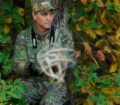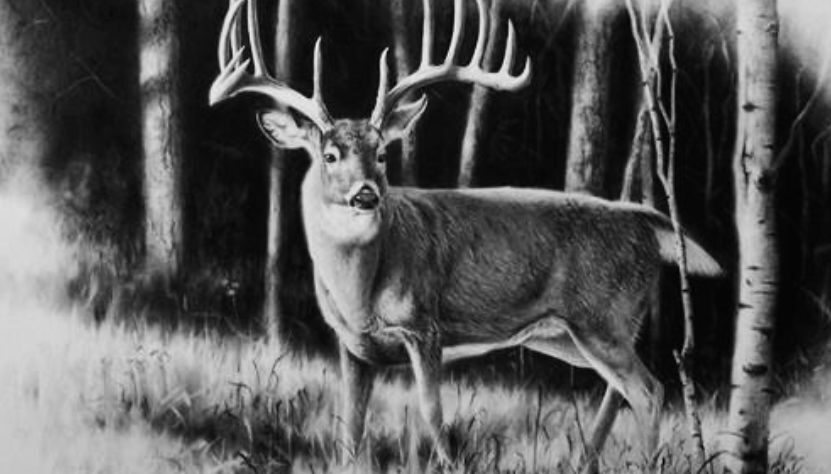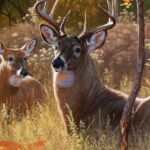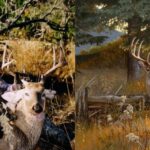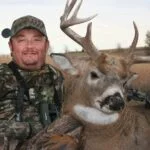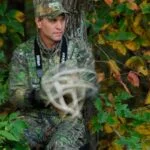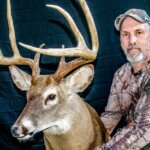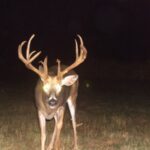Editor’s Note: Alex Rutledge of Birchtree, Missouri, a longtime hunter who’s starred in many outdoor videos and been featured on outdoor TV shows, has hunted and taken whitetails for many years. This week, he’ll tell us how to bag a big white-tailed deer successfully.
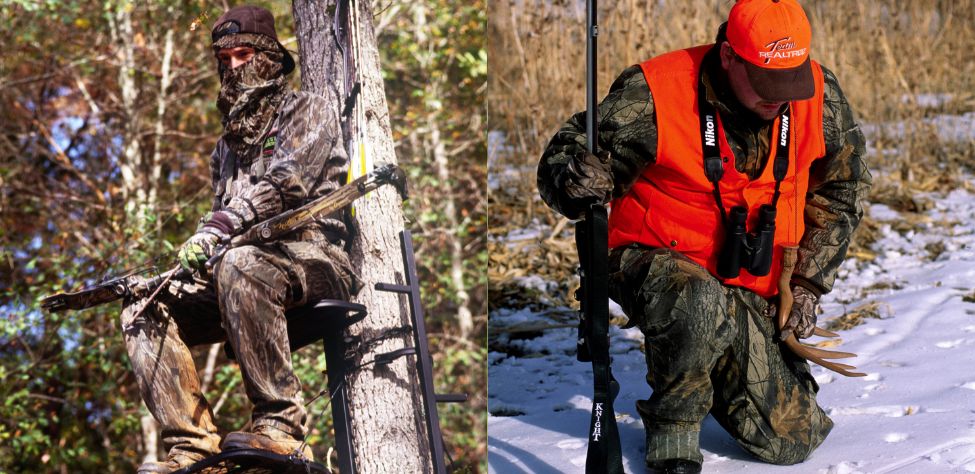
From traveling across the country and talking to hunters in many states, I’ve learned that most hunters assume they’ll take a big buck this season. However, they haven’t done the homework to make that dream of taking a trophy buck come true. Taking a big buck is just like passing a test at school. You can assume you’ll make an A, but if you don’t study the material that will be on the test, you likely won’t. Here’s a system to taking trophy white-tailed bucks that’s worked for me.
- Hunt the bucks where they’re located. Research the areas you want to hunt. Start with your local conservation officer. Talk to the wildlife biologist for that particular section of the state. Find out from him the number, the size, the weight, and the antler development of the deer being taken in that area. Also, talk with other hunters who’ve hunted that region. Learn the kind and the size of bucks they’ve been taking. If you’re hunting a state’s wildlife-management areas, check the previous year’s kill records to see the size and the number of bucks taken. Before you hunt a big buck, ensure there’s a big buck in that area or that the region has been known to produce big bucks. Also, check out Facebook groups that hunt specific areas or states and learn their information.
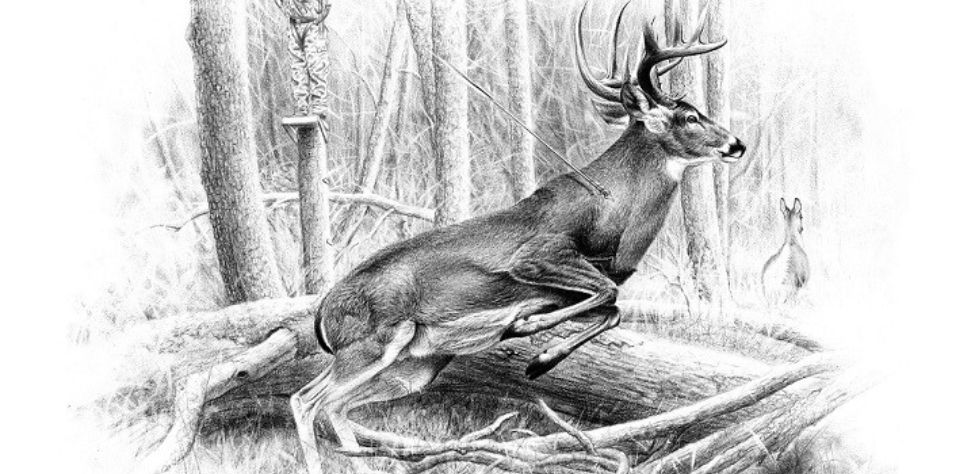
- Pinpoint the exact spot where you can see trophy bucks. Use motion-sensor cameras, spotting scopes, and binoculars to scout the area you plan to hunt. The real key to finding a big buck is locating him before the season and staying as far away from him as possible while you learn where and when he goes. You need to know where the buck you want to take is coming out into an agricultural field, crossing a power line, or working a scrape. Know where that deer’s showing up so you can get a shot at him.
- Identify the food source he’s feeding on and when he’s getting there in the morning. Locate his bedding area and the trail he’s using to get there and determine when he’s traveling that trail. Remember, you must avoid the deer while learning how to hunt him. You don’t want the buck to know you’re hunting him until after you’ve released the arrow or squeezed the trigger on the gun.
Looking for more content? Check out our YouTube channel and watch “Bob Sheppard’s Whitetail Book” by John E. Phillips.

How to Hunt and Take Big Buck Deer on Small Properties
In this book, you’ll hear from 14 hunters who either have gained permission or leased properties as small as six acres to as much as 250 acres, and how they consistently take older-age-class bucks off these little lands.
VERSIONS: AUDIBLE, KINDLE & PRINT

Jim Crumley’s Secrets of Bowhunting Deer
Using a black magic marker and a gray work jumpsuit, Jim Crumley of Buchanan, Virginia, drastically changed the nature and purpose of hunting camouflage when he created the first sportsman’s camouflage – Trebark. Crumley’s love of bowhunting and his desire to be more invisible changed hunting clothing forever.
In this hunting guide, he shares the wisdom that he’s learned throughout his lifetime about how to be a hunter, how to find a deer lease, how to scout for deer, and more.
Special features include how to:
- Have a magic 60 acres to hunt
- Decide the best equipment to use
- Find deer year-round
- Locate land to hunt
- Know the best place to put your tree stand
- Get bucks within bow range
VERSIONS: AUDIBLE, KINDLE & PRINT

How to Hunt Deer Like a Pro
How do you know if the land you hunt has a trophy deer on it? Wildlife manager Bob Zaiglin, of Uvalde, Texas and Jim Crumley, the father of modern-day hunting camouflage, tells you how to find out. GPS can make finding and taking that trophy buck easier. This hunting guide will teach you how to hunt big bucks where no one else can find them, how to call deer, and how to become versatile as a deer hunter, so that if one deer tactic doesn’t work, another one will.
In the chapter, “How to find Bucks at Scrape,” Dr. Keith Causey, retired professor of Wildlife Science at Auburn University, describes the best way to hunt a scrape.
Brad Harrison of Neosho, Missouri, is a nationally-known videographer, professional deer hunter and master at calling deer. Another master is Will Primos of Primos Game Calls. These two experts will tell the best deer calls and when to use them in this book.
And for over 20 years, Bo Pitman, lodge manager of White Oak Plantation, has been studying deer movement patterns. He explains what types of conditions are best for predicting deer movement.
VERSIONS: AUDIBLE, KINDLE & PRINT

Deer hunting and deer hunters are drastically changing each year. To learn new techniques for hunting deer and have more places to hunt, I’ve interviewed some of the best deer hunters in the nation and share their tactics in How to Hunt Deer Like a Pro: Volume II.
In Chapter 10, Jacob Lamar tells you his tactics for consistently taking older-age-class bucks on public lands in several states. Chapter 11, Bob Walker explains how to find places on public lands where you can hunt that 99 percent of the other hunters never have considered hunting. The Bonus Chapter with David Ramey tells you how, where, when and with what equipment to take big Kansas bucks on public lands by hunting in 100-degree weather when others won’t hunt.
Chapter 13, Mark Drury, his family and his guests take mature bucks every season by having more small places to hunt rather than one large property. Drury explains the strategy of having satellite farms to hunt that only may be 50-150 acres each or less. Chapter 15, Pat Reeve, who hunts far-northern states and Canada, says, “I don’t like hunting for mature bucks until the weather is 20 degrees or less.” Chapter 4, Dr. Larry Marchinton says that funnels are the most-reliable stand sites to hunt for big bucks and tells why.
VERSIONS: AUDIBLE & PRINT
Tomorrow: Notice the Wind’s Direction to Take Deer

